News
‹ back to weather news
News
-
Australia’s highest solar power season ever
Felix Levesque, 6 May 2025The National Energy Market (NEM) recorded its highest solar energy generation over the past summer as high pressure dominated southeastern Australia.
The NEM connects NSW, the ACT, Queensland, South Australia, Victoria and Tasmania through a physical power network and a wholesale electricity market. Over recent years, the NEM has continued to implement more and more renewable energy sources into its network. Combined with favourable weather, both the summer of 2024-25 and the last quarter (January to March 2025) saw record solar generation production, as seen in the image below.
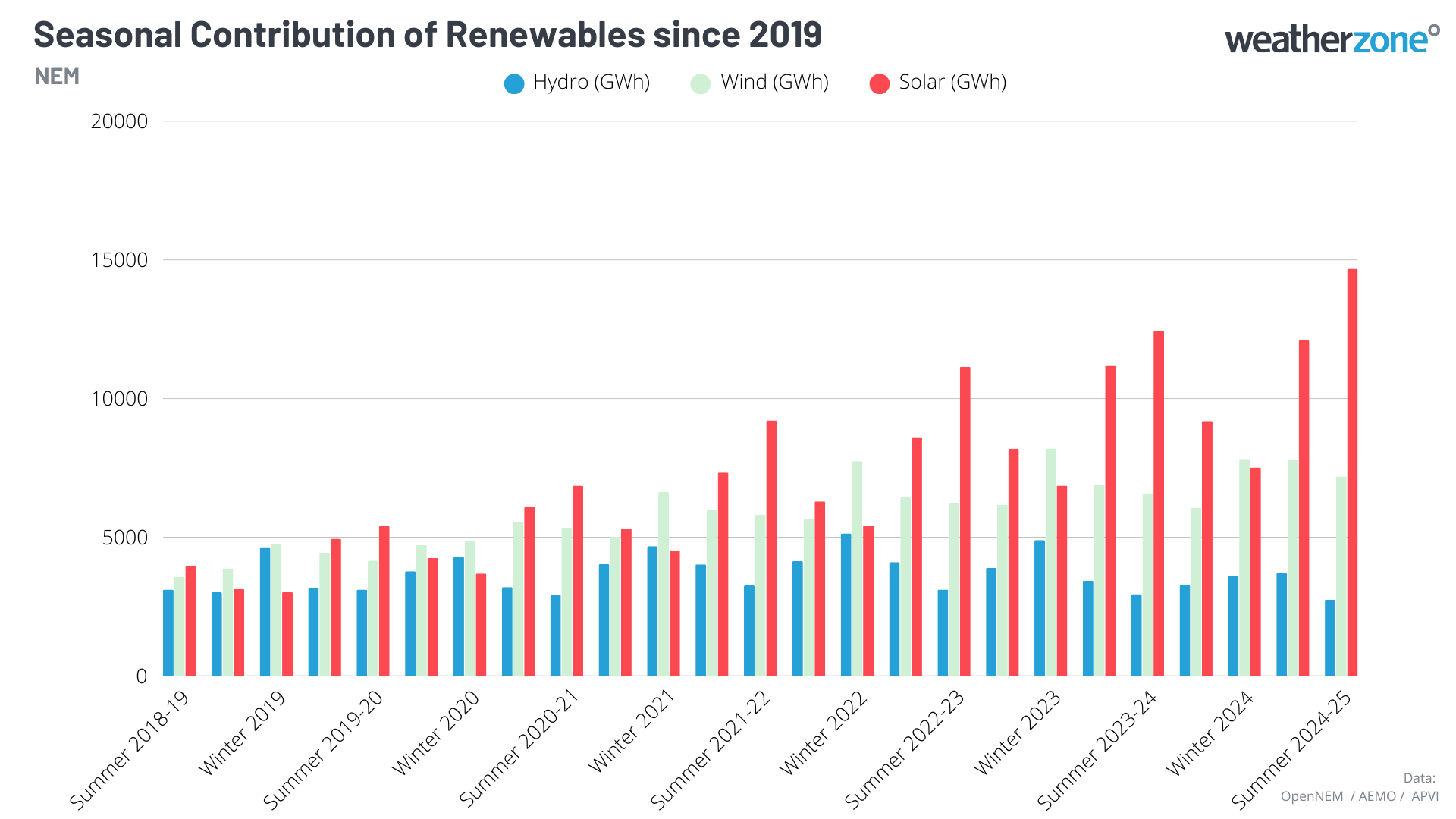
Image: Seasonal contributions of renewables across the NEM since 2019. Source: OpenNEM.
The image below shows that high pressure has remained a steady feature across most of southeast Australia, keeping cold fronts and moisture away from the solar generation zones of South Australia, Victoria and Tasmania – with ample solar radiation powering the NEM. As a result, solar energy dominated the renewable energy supply.
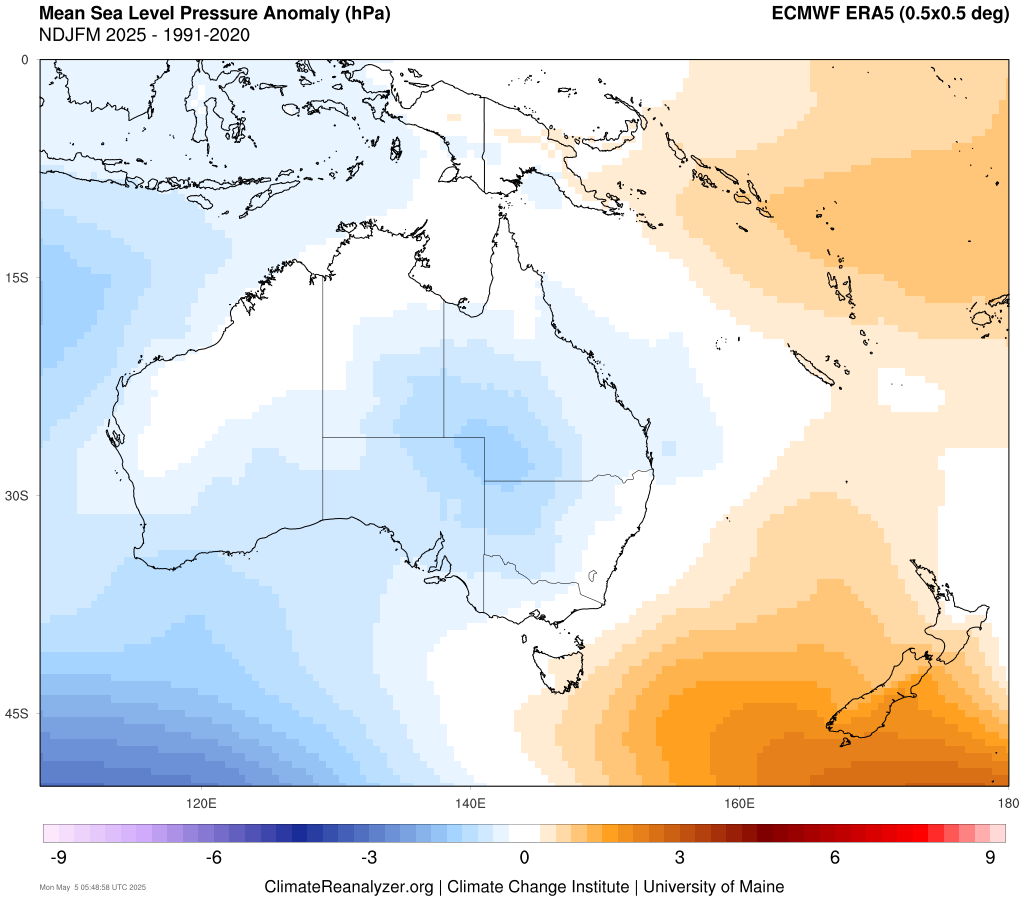
Image: Mean sea level pressure anomalies between November 2024 and March 2025. Source: ClimateReanalyzer
Wind energy generation
While fronts have been less active across southeastern Australia, the wind energy generation has remained steady with the increasing production capacity. The image below shows near or below average wind speeds across southern and eastern wind generation zones between November 2024 and March 2025.
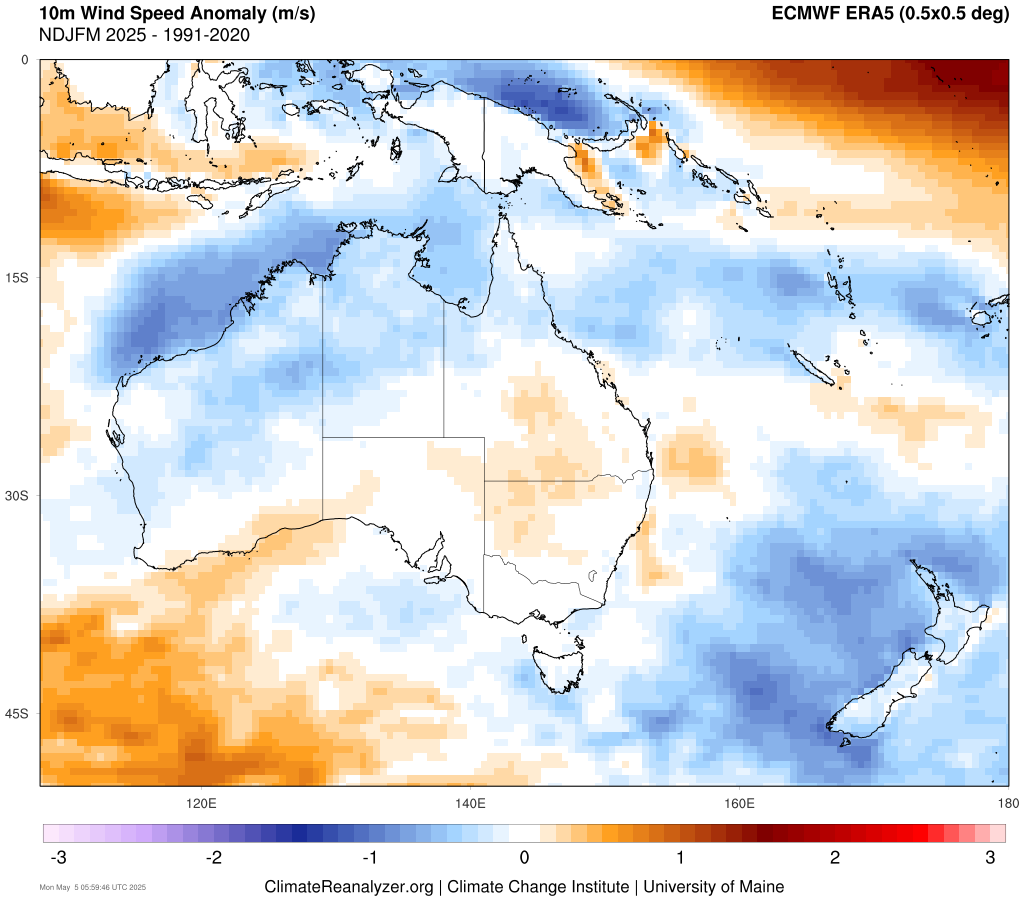
Image: 10 metre wind speed anomalies between November 2024 and March 2025. Source: ClimateReanalyzer
While strong enough winds are needed to get wind farms producing, excessively strong winds can damage the turbines. Propellers are typically stopped at a cut off wind speed of about 25m/s (equivalent to wind gusts exceeding 90km/h). Powerful cold fronts can easily exceed these speeds, so the lack of strong cold fronts has been beneficial for steady wind energy generation.
The broadening of renewables across all states has also decreased the NEM’s reliance on non-renewable energy sources. Summer is usually Queensland’s calmest month for wind, but increasing uptake in wind generation has led to a 66% increase this summer compared to the summer of 2021-22, and over four and a half times of the energy produced in the summer of 2019-20.
Hydro energy generation
Hydro generation has, however, seen a steady decline, with intense rainfall deficiencies plaguing parts of southeast Australia over the past two years. As a result, hydro generation throughout the summer season was at its lowest since 2014. With water supply becoming a growing concern, the NEM has been able to compensate with ample solar generation and steady wind supply.
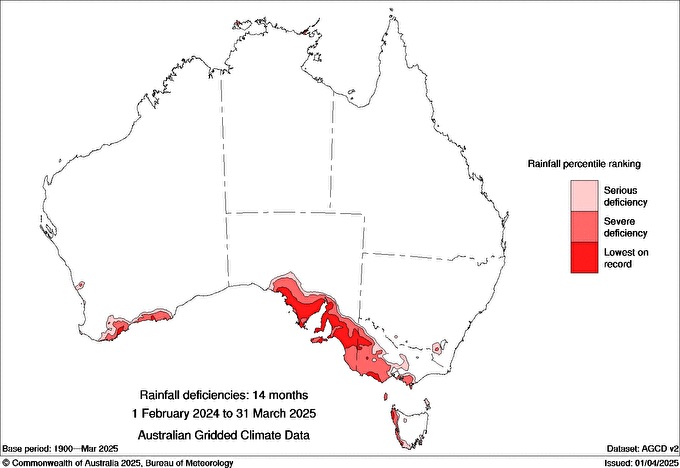
Image: Rainfall deficiencies in Australia from February 1 2024 to 31 March 2025. Source: BoM.
Outlook for the next few months
Higher than average pressure over Australia’s southeast is expected to persist through May and the start of winter, as shown by the image below. This should extend the ongoing streak of decreased cloud cover and cold fronts over southeastern Australia, promoting increased solar energy production. However, the lack of rain-bearing cold fronts will also prolong the rainfall deficiencies plaguing southern Australia during what are usually the wettest months of the year – a bad sign for water supply and hydroelectric generation.
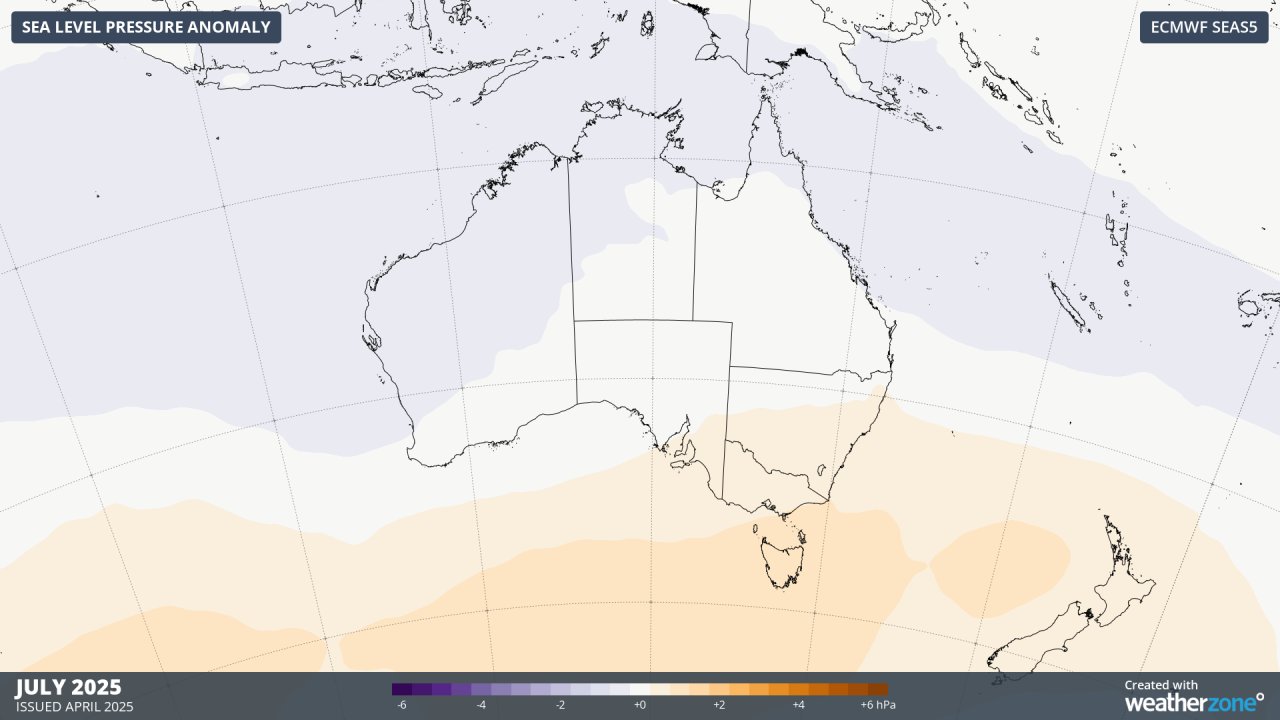
Image: Sea Level Pressure anomalies for July 2025.
Energy demand may also be lower due to warmer temperatures, especially across southern Australia, with fewer powerful cold fronts and ample warming sunshine. Spells of cold mornings are still possible, with high pressure leading to increased radiative cooling. However, on average, the coming months should see warmer-than-average temperatures over much of Australia, as seen in the image below.
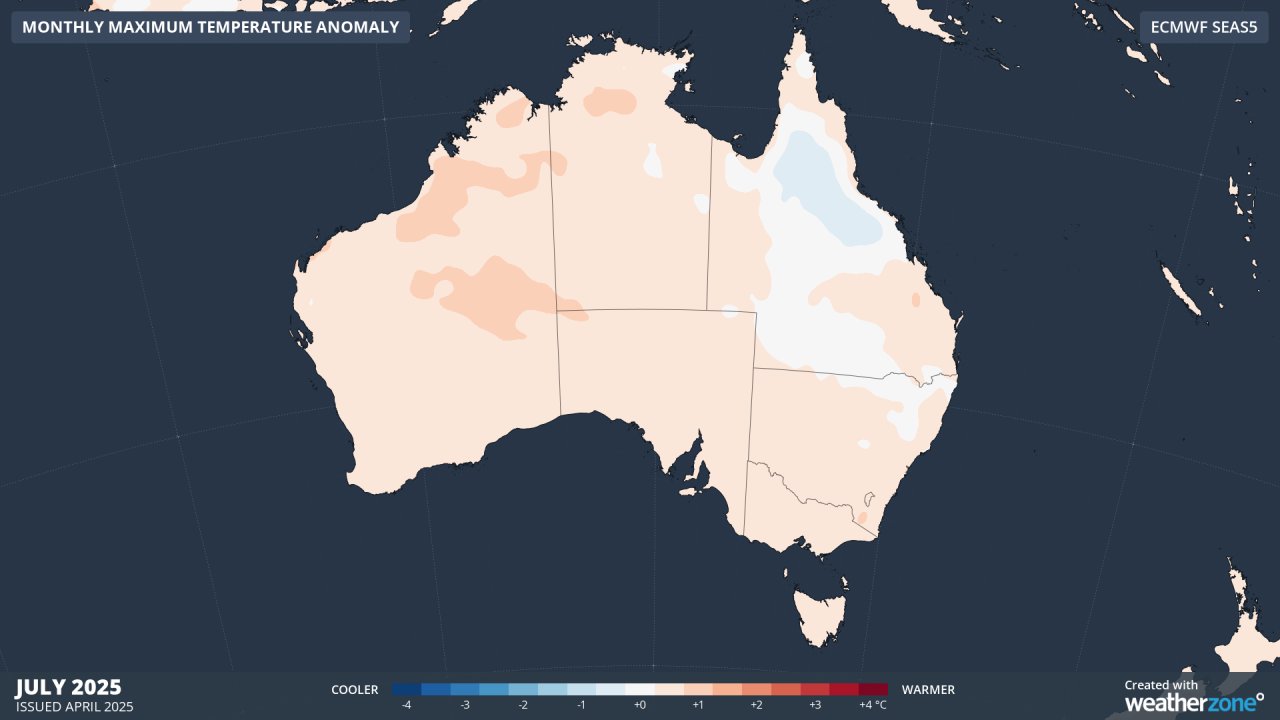
Image: Monthly maximum temperature anomalies for July 2025.
For an in-depth look, please read our winter outlook at:
Positive SAM and warm oceans dominate Australia’s winter outlook
- Other news
- Tue 06 May 2025 Eta Aquariids meteor shower – how to see it from Australia
- Tue 06 May 2025 Kati Thanda-Lake Eyre tourism frenzy as waters surge onto the salt pan
- Mon 05 May 2025 Australia surrounded by ring of rainfall this week
- Mon 05 May 2025 Victoria just had its warmest April on record
- Sun 04 May 2025 Will May and June bring snow for the start of 2025 ski season?

